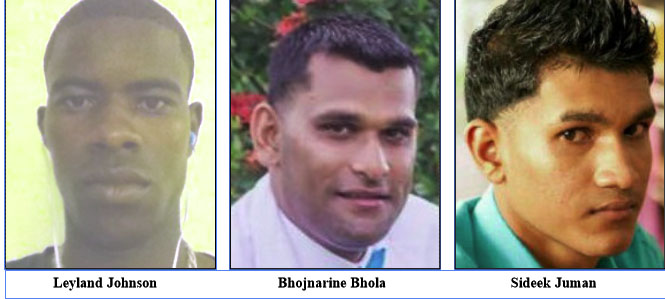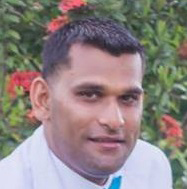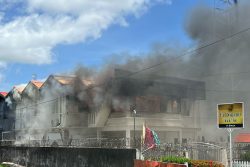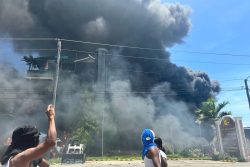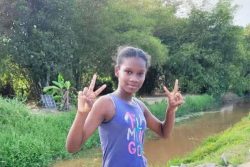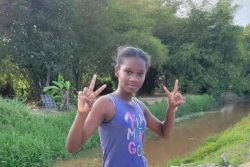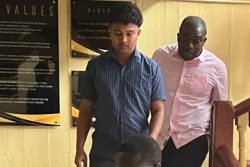Minister of Education Priya Manickchand held her end-of-year press conference recently dealing with the year 2024. It is not clear why she left it so long when Finance Minister Ashni Singh was due to deliver his 2025 budget only a week later. During the course of that he would have announced the sum which was being allocated to the education sector this year and what it was to be expended on.
Be that as it may Minister Manickchand told the media that over the last four years her ministry had spent some $31 billion on infrastructural works. This broke down to 13 billion in new construction; 7 billion in reconstruction; 8 billion in major extensions; and 2 billion in major rehabilitation work.
In addition to new primary and nursery schools, she said that 37 new secondary schools had been added to the existing complement of 116, and the intention was to deliver universal secondary education by the end of this year.
The government’s decision to build these schools had been inspired by the fact that there was a severe shortage of space. “[W]e don’t have about 3,000 spaces for children in Georgetown and Region 3. We simply don’t have seats and spaces to put these children in … Right on the East Bank, as we speak, children are in primary tops.” This was a reference to the fact that where there are no secondary schools available, children continue their further education in primary schools, known as primary tops.
The Minister was optimistic that despite the challenges, such as the case of Vreed-en-Hoop, where despite plans having been drawn up the ministry could not find land, the goal of 100% secondary education was still within reach. However she later qualified that to concede that some schools might not be completed in time. She also repeated something she had said earlier, namely that the UN had said Guyana already had universal primary education.
This is something of a red herring. The act for compulsory primary education dates back to 1876, although admittedly it was a long time before it was fully implemented. Nevertheless, towards the end of the colonial period this country was acknowledged as being remarkably literate with rates comparable to those of some developed nations. Educational attainment began to fall during the Burnham era for a variety of reasons, and recovering from that has been a difficult process.
What the Minister has to ask herself, however, is whether all primary-age children who should be in school are, in fact, in school and whether there are adequate systems in place to ensure full enrolment. Certainly where some Venezuelan immigrants are concerned that is not the case, the example of Ruby Backdam coming immediately to mind, although this newspaper was told that this was also true of the Linden migrants, something the Minister of Foreign Affairs denied. But one also has to wonder whether all Guyanese children living in very impoverished circumstances are sent to school on a regular basis, if at all. Pupils who slip through the gaps at the primary stage will never get a secondary education.
As far as the secondary schools themselves are concerned, the immediate question to be asked is does the Ministry really have the qualified teachers to staff them? It is all very well to have a plethora of well-appointed schools, but unless there are sufficient competent educators to instruct the students, there will be little impact on educational outcomes. In circumstances where it is known there are shortages of qualified staff in various subject areas, particularly the STEM ones even in urban communities, one wonders how certified teachers will be attracted to hinterland schools.
And last year we reported on the following secondary schools being opened, or in the process of construction, or having ground broken for their building: Yarrowkabra, Kaneville, North West Secondary, Hosororo, Jawalla, Tuschen, Monkey Mountain, Orealla, Region Eight, Waramuri, Phillipai, Nismes, Marurunai. It will be noted that most of these are in the interior, which on the face of it is good. However, again, there will be a difficulty in attracting teachers to the hinterland who possess the kind of qualifications necessary for placement in secondary schools.
Unless the government is prepared to pay teachers considerably more than they do at present – the pay increase agreed last year notwithstanding – all their new schools, particularly at the secondary level, will be a source of disappointment. The administration made a huge mistake in 2024 by labelling the teachers’ strike as politically motivated, when in fact it was all about pay, something they should have realised when their own constituents went out on the street. Even more important than buildings are teachers, and if the remuneration is not good the best graduates will not be attracted into the profession, and the Minister will be forever designing yet more projects to raise achievement levels.
Ms Manickchand also had something to say about the exam by which children are admitted to secondary schools – the National Grade Six Assessment. There would be no change to its format for 2025 and 2026, she said. It appears there had been calls to remove Social Studies from the NGSA, but the Minister was not at all disposed to entertain this suggestion.
“I have heard the call for core subjects to be offered. I like our children doing a little bit of everything and getting some exposure. We live in a very diverse country; how are Georgetown children going to learn about the vaqueros in Region 9? Or how are the hinterland children going to learn about diyas of the Hindus if we drop Social Studies?” she asked.
Whether the children currently learn about vaqueros and diyas is perhaps a moot point, but her general argument certainly can be defended. The problem in the past has not been with including Social Studies in the NGSA in principle, but with the content of the syllabus. Apart from not being devoid of dodgy history, the content also contained endless detail about Caricom institutions, among other things, which were not just boring for young children but also age inappropriate.
The themes of the Social Studies paper are not really publicly known at present, except to the teaching profession and perhaps a few concerned parents, but if they were to be put online, say, where interested professionals and other individuals could see them, this could produce some sensible suggestions about what should be included or omitted.
The same thing obviously applies to the other three papers as well, and in terms of what people should be asking about the NGSA the Minister cited the case of Science. She said in this instance we should be asking, “Do we go too deep?” Before people can answer that question, however, they need to see the course outline first.
